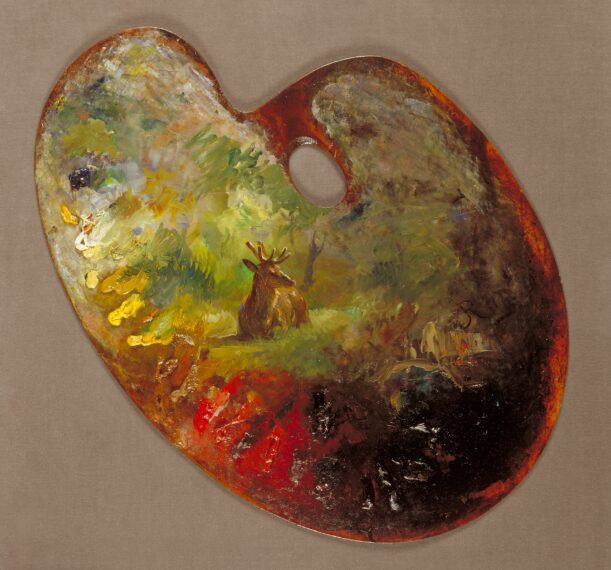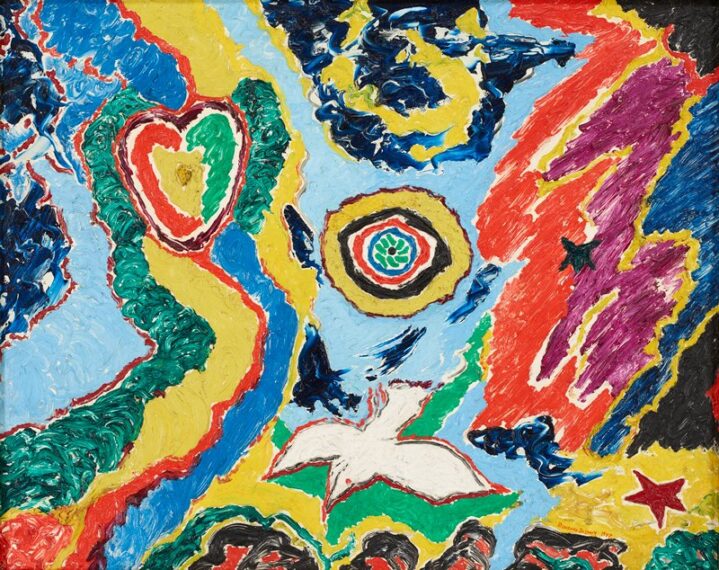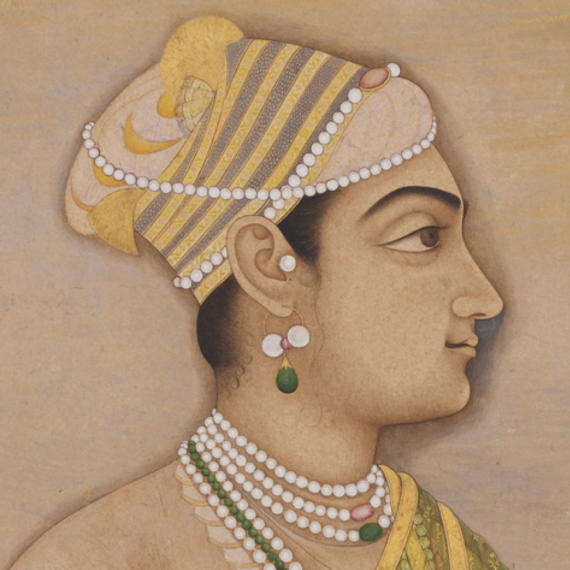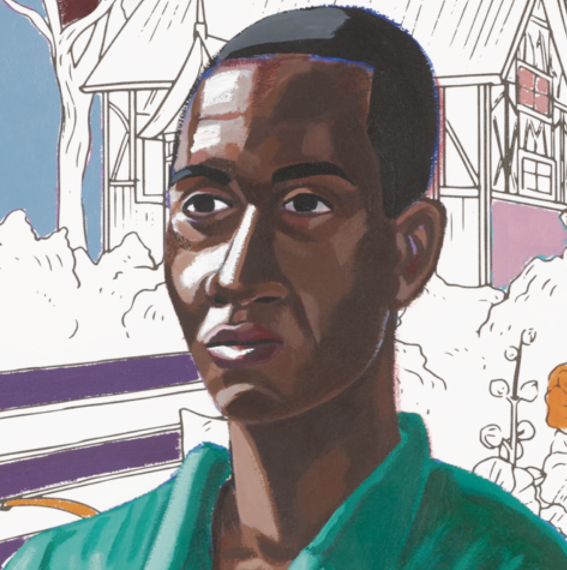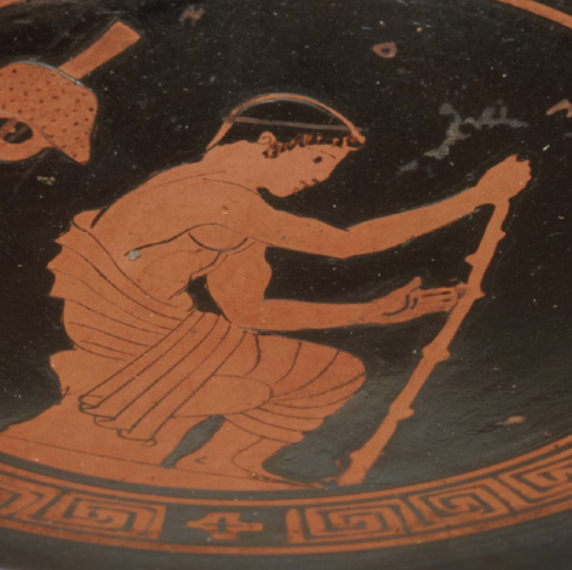For the month of June, Mia is highlighting 2SLGBTQIA+ artists and themes through artworks spanning centuries and social epochs. Many of these works have been made by queer artists, others depict queer themes throughout history. Explore the works in the galleries or virtually in this self-guided tour.
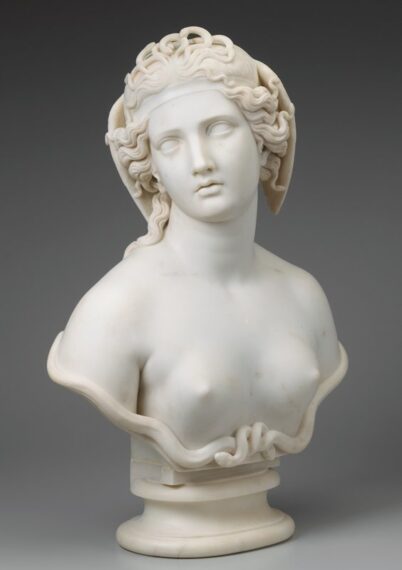 Harriet Goodhue Hosmer, Medusa, 1854
Harriet Goodhue Hosmer, Medusa, 1854
Gallery 323
At a time when less than one percent of American women went to college, Harriet Goodhue Hosmer studied anatomy and moved to Rome to study sculpture. In 1858 she established her own sculpture studio in Rome, leading a team of more than 20 men. Hosmer often depicted strong female figures. Hosmer’s compassionate rendering of Medusa shows her transformation to a Gorgon in progress, snakes intertwined with her flowing hair.
Rosa Bonheur, Palette, 1850s
Gallery 354
The French painter Rosa Bonheur specialized in pictures of animals, which were celebrated for their vivacity and realism. She achieved international fame and became the first woman admitted to the French Legion of Honor in 1865. She was also openly gay, making her path to success in a male-dominated profession that much more groundbreaking. This was reportedly her personal painting palette for decades, which she gifted to her godson.

George Tooker, Coney Island, 1948
Gallery 361
George Tooker’s intimate circle included a wide range of artists, dancers, writers, photographers, and musicians who identified as queer. They confidently depicted their lived experiences and celebrated their identities at a time when doing so was dangerous and illegal in certain parts of the United States. Coney Island shows a wide range of people enjoying the beach, reveling in the environment and beauty of all bodies.
Luis Cruz Azaceta, La Mano Blanca, 1979
Gallery 369
Luis Cruz Azaceta’s La Mano Blanco references the Guatemalan right-wing, anti-communist “death squad” best known as Mano Blanco (White Hand). Mano Blanco was responsible for the kidnapping, torture, and extrajudicial murder of thousands of people in rural Guatemala. These so-called counterterrorist operations received support from the Guatemalan army and government, as well as from the United States government.

Martin Wong, Polaris, 1987
Gallery 369
Recognized during his lifetime as an important chronicler of the Chinese-American community in San Francisco’s Chinatown and the Hispanic and African-American communities in New York’s Lower East Side, the majority of Martin Wong’s work can be read as an ode to his beloved neighborhood and those who lived there. In Polaris, we see a distinctly optimistic and fantastical vision of Wong’s New York.
Kehinde Wiley, Santos Dumont—The Father of Aviation II, 2009
Gallery 374
Kehinde Wiley is best known for his large-scale portraits of Black people depicted in poses that cast them as kings, prophets, and saints in the tradition of “old master” canvases, reminiscent especially of Renaissance and Baroque painting. Wiley met the two young men featured in this painting in Rio de Janeiro, Brazil. The subjects chose to position themselves as the two “fallen heroes” in a well-known public monument dedicated to one of Brazil’s pioneer aviators, Alberto Santos-Dumont.
Beauford Delaney, Untitled, 1947
Gallery 376
As a Black queer man from the South, Delaney left the United States for France in 1953 and found the environment more comfortable than even his adopted New York City. There he joined a wide group of expatriates, including writer James Baldwin, and made the most daring work of his career. This early painting is filled with personal symbols that seem to celebrate creativity and the link between vision, heart, and spirit.
Hunhar II, Bust portrait of a lady wearing a man’s turban, 1735–40
Gallery 211
This portrait depicts a woman wearing a man’s turban. Using the reductive, naturalistic style typical of early 1700s Mughal portraiture, the artist Hunhar II celebrates what seems to have been a common happening within enclosed zananas (women’s domestic spaces) throughout India: cross-dressing was recorded at least since the time of Empress Nur Jahan (1577-1645).
Lamar Peterson, The Red Hat, 2022
Gallery 230 (Rotunda)
Gardening, like many outdoor hobbies, is not always associated with or afforded to Black men. The Red Hat is a striking portrait of a Black man sitting in a garden. Many of Peterson’s figures are proxies for the Minneapolis-based artist himself. Here a gentleman gazes into the distance, lost in thought and surrounded by signs of cultivation.
Attributed to the Villa Giulia Painter, Red-figure Kylix, 5th century BCE
Gallery 241
This two-handled wine cup is decorated on both interior and exterior surfaces with young men in various stages of undress, engaged in athletic activities in a gymnasium. In ancient Greek society, intergenerational male friendships were commonplace and often fostered in these gymnasia. Formed to instruct young men in correct civic and moral behavior, these relationships were generally sexually intimate as well.
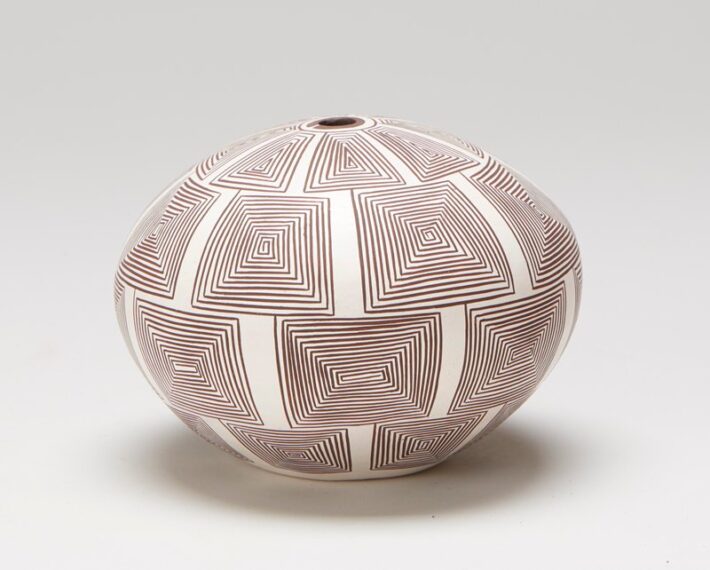
Franklin Peters, Mazes Seed Pot, 2014
Gallery 260
Franklin Peters comes from Acoma Pueblo, a community known for its beautiful pottery. Raised by a family of potters, Franklin is a master of traditional works that reflect his ancestral lineage while incorporating a contemporary sensibility. His seed pot, as the name suggests, would traditionally be used to store seeds. The painted designs represent rain falling onto cornfields.


